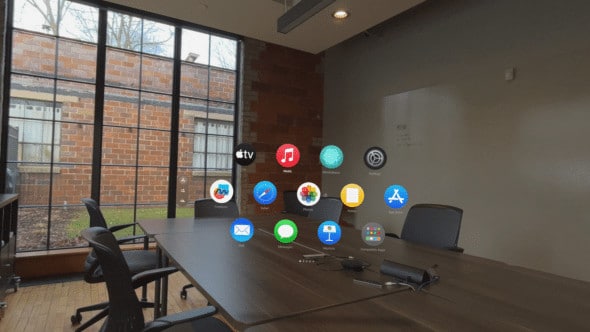One perk of working in a tech-forward field is getting to play with all the new gadgets when they come out. It’s a hard job, but somebody has to check whether Spatial Computing is a revolutionary new platform or just another fad. Should we get good at writing software for it (like we did back in the early iOS days), or should we encourage clients to caution (like we did in the early blockchain days)? Someone has to answer that, and so we soldier on, forced to play with the new toys like Apple Vision Pro. For work. Definitely, for work.
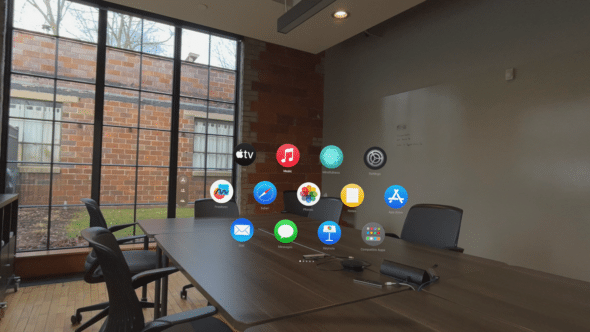
If you’ve been playing around with visionOS, or you’re thinking about snagging a refurb out of this first batch of returns, here are the apps that have been most useful for me, somebody with a schedule more manager than developer.
Apps for Work
- Fantastical. It’s the best calendar app. It integrates with basically everything. It does Calendly style openings with less fuss and a better web app. It does tasks too, I’ve heard, but I don’t care because I use…
- Things. It’s the best task list. Thoughtfully designed. Beautifully considered. It’s a delight. Seriously.
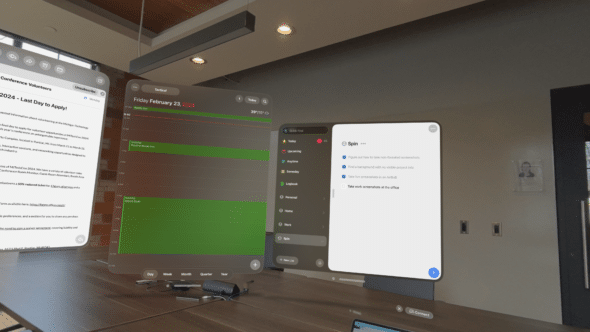
- Mail. Apple Vision Pro is a surprisingly capable email device for email triage and (if you pair a Bluetooth keyboard) responding. You can have your inbox floating off to the side when you’re in triage mode, or you can turn on an Environment and focus when you’ve got something difficult to draft.

- Miro. This is an app written for iPad that works just fine in visionOS. It’s the collaborative whiteboard that we tend to reach for these days. Many apps have tried their hand at this space. Miro’s the good one at the moment.
- 1Password. This again is an iPad app, but the way that it uses system APIs to integrate into all the right places makes it extremely worthwhile. It’s how we keep client secrets safe and ensure our teams stay up to date with the latest credentials.
- Day Ahead. There is no always visible clock in visionOS, nor is there a menubar, so my usual trick of having Fantastical display my next meeting in the menubar doesn’t really work in visionOS. But, there’s a cheeky indie app that does exactly one thing, render a time…tube of your day in 3d, with lozenges for each event on your calendar. The whole thing is surrounded by a ring representing the current time. It shouldn’t work, but it totally does.
- Zoom. It is what it is. I need to caveat this one. Do not, under any circumstances join an important call with your digital Persona. They’re terrible and creepy; so deep in uncanny valley that they make people actually uncomfortable. But if you want to give your coworkers a mild scare at your next scheduled internal Zoom call. I won’t stop you. 😈
- Tailscale. The iPad app and VPN connection just work, and it’s incredible. I use a tailnet to connect to my smart home stuff when I’m away, and to self-host my Anki database sync server, and all that stuff just works out of the box on visionOS. Speaking of Anki…
- Anki, my favorite memory aid works great in visionOS.
- Slack. The iPad app is fine.
Apps for Goofing Off
- Encounter Dinosaurs. This is the demo that makes people go “Whoa!” in guest mode. 🦖

- Blackbox is phenomenal puzzle game. Play it on iOS if you don’t have a visionOS device yet.
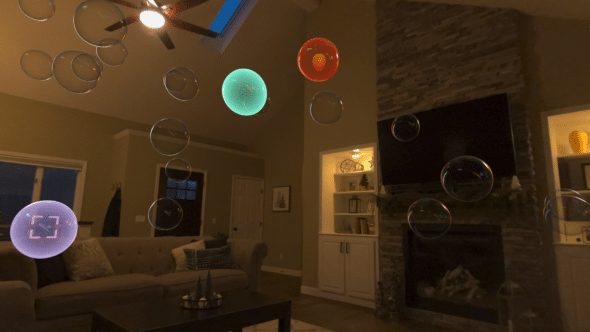
- Synth Riders. It’s like…almost Beat Saber. Not quite, but almost. Hopefully real Beat Saber comes soon. 🥺

- What the Golf? is madcap.
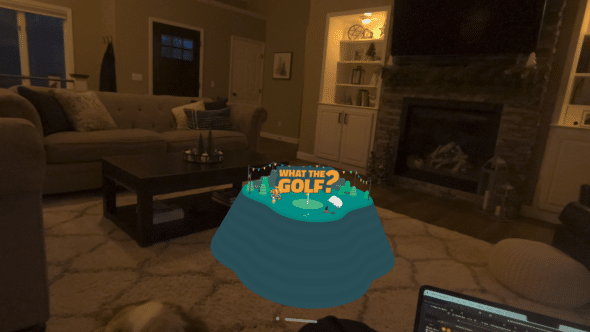
- Photos. Spatial photos and videos are every bit as cool as people say.
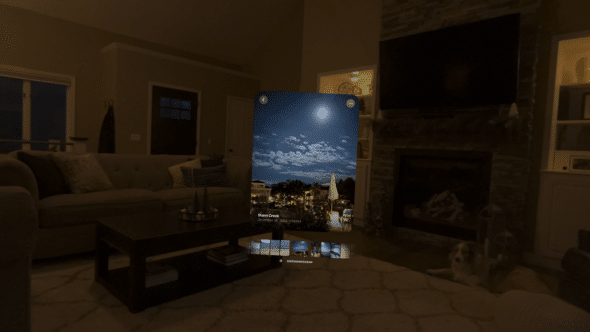
So, is this thing any good?
Yes. Apple Vision Pro is a good computing device with good video passthrough. And, it’s the most cohesive, easy-to-use device in its category that’s been released so far. By comparison, the Quest 2 is a great game console but a terrible computing device. Comparing the two is a bit like comparing a MacBook Air to an Xbox.
Spatial computing is still very early, but it probably will catch on as the tech gets better, smaller, and cheaper. It’s still a bit clunky, and you look a bit dorky, but it is compelling as a computer in a way that prior VR efforts haven’t been.
Should I build an app for it?
You should definitely test your app for it and potentially make design tweaks to your iPad app to ensure it works well in visionOS. Buttons in the bottom corners of the app, for instance, make it really annoying to use because the system has a hard time telling whether you want the button or the window resize control.
You should consider building a native visionOS app, but only if being on the latest platforms is a core part of your business or it enables something not previously impossible.
This is a lot like when mobile apps really got big. It’s worth buying one or two of these things and having the curious tech-forward people in your org try them out. Explore if having a 3D head-mounted display can make something about your product offering more compelling. (But be prepared to wait for the market to catch up. They don’t make many of these things yet).
For internal use, consider two main internal customers: travelers and people who need to build 3D understanding. Apple Vision Pro is a good travel computer. If you’ve got a jet-setting C-Suite who wants to look at reports in an immersive 3D view, give it a shot. If you’ve got technicians who could share knowledge easier by just showing each other how stuff works in 3D (and you’ve got 3D asset creators on staff), take a look at apps like JigSpace and see if you could do something similar for your own industry.
The market is small, but it will likely grow, and native visionOS apps feel way better than iPad shovelware in most cases. This is the time for a few players (media organizations, dev tool makers, games) to place large bets and a time for a lot of players (basically everyone else with an app or a website) to place small bets.

